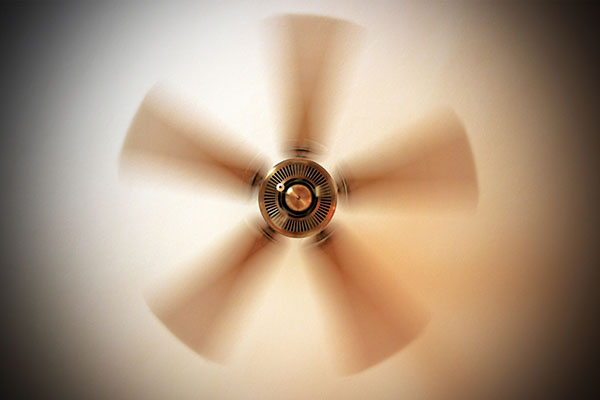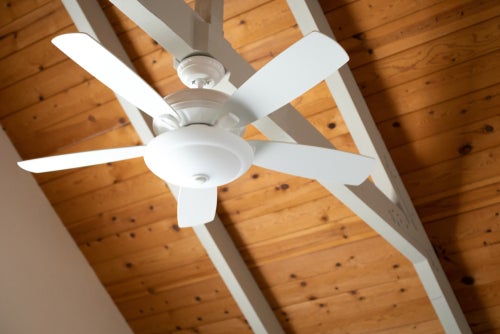Ceiling Fan Direction: Which Way Should a Ceiling Fan Turn

Keep energy costs low and temperatures comfortable by knowing which direction ceiling fans should turn in the summer and winter.


Keep energy costs low and temperatures comfortable by knowing which direction ceiling fans should turn in the summer and winter.
Installing ceiling fans in your home is a great way to disperse air throughout your house. Fans can help immensely in the summer months because you get more bang for your buck regarding air conditioning distribution. They may even provide enough breeze to allow you to eliminate A/C usage altogether.
Did you know that ceiling fans can also be beneficial in the winter? They can help push the heat back down, causing your heater to turn on less frequently.
The key to ceiling fan usage lies in the fan direction. A simple flip of a switch has the power to
Should the ceiling fan direction switch left or right for summer?

Keep yourself cool by switching the ceiling fan direction to move counterclockwise on hot summer days. Having the fan move counterclockwise will cause the blades to push cooler air straight down, giving you a nice, direct breeze. The higher the temperature, the higher the speed should be for maximum airflow.
A good way to know if your fan is spinning the right way is to stand directly below it and see if you can feel the breeze. If it seems weak, it’s most likely turning clockwise; you’ll want to reverse the direction for the summer months. If you think your fan may be spinning the wrong way, turn it off before flipping the switch to change its rotation.
If your ceiling fan is still not circulating air thoroughly, it might be time for a new fan. To help optimize airflow, choose the right ceiling fan that is the appropriate size and has the right amount of strength and blade span for the space.
A protection plan can help cover ceiling fan breakdowns, so you don’t have to sweat it.

Most ceiling fans are designed for year-round use and using them properly can help cut energy costs no matter the season. The correct fan direction for winter is a clockwise rotation. It may seem counterintuitive, but using your ceiling fan on a chilly day may actually help your space stay warm.
By setting the direction of the ceiling fan in winter to spin clockwise at a low speed, you’re circulating heat throughout the room when there’s a chill in the air. The fan will draw the cooler air upward to the ceiling, where it will mix with warmer air. It will then push the air out toward the walls so you don’t feel it directly.
In general, turn a fan counterclockwise to blow air straight down, and change it clockwise to draw the air up and circulate it around the room. When the seasons change, so should the direction of your ceiling fans.

Here are some scenarios that will help you decide what your ceiling fan direction should be for the best airflow no matter the time of year:
Yes! Ceiling fans are covered by a home warranty from American Home Shield®. All of our home warranty plans include a ceiling fan warranty, which covers all parts and components of your fans when they malfunction due to wear and tear, subject to the limitations and exclusions of your contract. Protect your budget with an AHS home warranty. Look at our pricing and plans to choose the best plan for your household.
AHS assumes no responsibility, and specifically disclaims all liability, for your use of any and all information contained herein.
Have a plan for your home when things don't go according to plan
Shop Home WarrantiesStaging